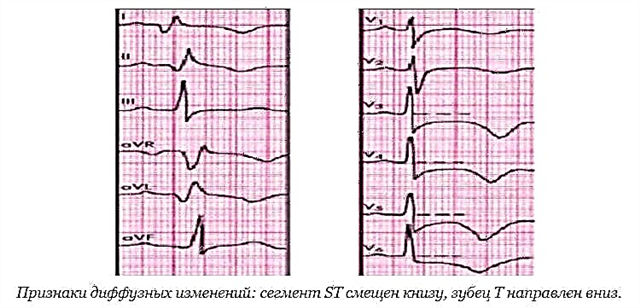The insidiousness of atrophic rhinitis lies in the gradual development of the disease and the late detection of the pathological process. A person does not always pay attention to the appearance of rhinorrhea and nasal congestion, which is why the inflammatory process in the nasopharyngeal mucosa progresses and becomes chronic. To cure atrophic rhinitis, treatment must be complex and long-term.
 Sometimes a person does not notice how the mucous discharge becomes purulent and dryness in the nose appears. Depending on the cause, development mechanism and state of the nasopharyngeal mucosa, there are:
Sometimes a person does not notice how the mucous discharge becomes purulent and dryness in the nose appears. Depending on the cause, development mechanism and state of the nasopharyngeal mucosa, there are:
- simple atrophic rhinitis, which is manifested by dryness in the nose, a large number of crusts, insomnia, impaired sense of smell and inability to distinguish between taste. Nasal discharge is viscous, scanty, a foreign body is felt in the nasal cavities. During rhinoscopy, large areas of the mucous membrane are visualized, where the cilia have undergone destruction, and the epithelium has acquired a flat appearance. Increased trauma to the mucous membrane leads to damage to the blood vessels, which increases the risk of nosebleeds;
- subatrophic rhinitis is characterized by less pronounced atrophy. Due to the violation of microcirculation, it is difficult to deliver nutrients to the tissues of the nasopharynx, the mucous membrane dries up and becomes crusted. Rhinoscopy reveals small areas with damaged cilia;
- an infectious atrophic form is manifested by sneezing, rhinorrhea, nasal congestion, signs of conjunctivitis, hyperthermia and deterioration of the general condition. A person becomes irritable, appetite decreases, puffiness appears under the eyes, and insomnia worries. The infectious form is characterized by damage to the bone structures of the nose and facial skull, which is manifested by deformation of the septum and asymmetry of the jaw;
- ozena is a separate type of atrophic rhinitis, in which the nasal passages expand, the mucous membrane becomes thinner and becomes pale. The mucus produced is of a thick consistency, with a pungent odor and purulent impurity. The crusts are greenish. A fetid odor is felt by people around you, which makes it difficult to communicate with a sick person. Due to the destruction of olfactory receptors, the patient does not notice a putrid smell. When the pathological process spreads to the rest of the respiratory tract, laryngitis, tracheitis develops, which are manifested by hoarseness and a painful cough.
Ozena can lead to meningitis, neuritis, sinusitis, and dyspeptic indigestion.
Conservative therapy
To avoid complications and get rid of the symptoms of a cold, you should responsibly approach the treatment of the disease. Medical treatment for atrophic rhinitis includes:
- rinsing the nasal cavities with a solution of sea or edible salt. At home, you can make a rinse aid by dissolving 3 g of salt in 200 ml of warm water. You can enhance the healing effect by adding a couple of drops of iodine. At the pharmacy, you can buy a ready-made saline solution, for example, Aqua Maris, Aqualor, Marimer. The procedure allows you to moisturize the mucous membrane, cleanse it of dust, mucus and crusts. Noticing the presence of pus in the nasal cavities (mucus, crusts become greenish), it is necessary to use disinfectant solutions for rinsing. It is recommended to carry out the procedure three times a day using Furacilin, Dioxidin or Miramistin;
- moisturizing the mucous membrane of the nasal passages with oil products. For this, eucalyptus, olive or sea buckthorn oil is suitable. As a result, dry crusts are easier to remove from the nose, the oil envelops the mucous membrane, protects it from damage and stimulates regeneration. Oil should be applied using a cotton swab;
- antibiotic therapy is prescribed for the bacterial type of the disease. The course of antibiotics is carried out taking into account the sensitivity of pathogenic microorganisms. This requires a bacterial culture of nasal discharge and an analysis of the antibioticogram. Antibiotics with a large spectrum of action are often prescribed;
- ointments to improve microcirculation (Trental), moisturize the mucous membrane (Vaseline, Camphor ointment), as well as activate metabolic processes and healing (Solcoseryl);
- homeopathic remedies, for example, Euphorbium Compositum, Delufen. The drugs can be used for a long course, do not cause addiction, improve microcirculation, protect the mucous membrane from the negative effects of environmental factors;
- preparations to increase the level of iron (Ferritin, Ferrum Lek);
- fortifying agents (vitamins A, B, intake of trace elements, autohemotransfusion).
Physiotherapeutic procedures, in particular, UV radiation, helium-neon laser, are a good addition to the treatment. Balneotherapy, climatotherapy, water procedures and walks in the forest have a general strengthening effect.
Correctly selected treatment allows you to restore the structure of the cilia of the epithelium, the secretion of glands and activate regenerative processes.
Surgery
 If conservative methods failed to improve the condition of the nasal mucosa, the issue of surgical intervention is considered. The operation is prescribed with a pronounced expansion of the nasal passages and the spread of the atrophic process to the bone, cartilaginous structures.
If conservative methods failed to improve the condition of the nasal mucosa, the issue of surgical intervention is considered. The operation is prescribed with a pronounced expansion of the nasal passages and the spread of the atrophic process to the bone, cartilaginous structures.
Surgical intervention is performed for a palliative purpose, since it is impossible to completely cure a person from the disease. The operation is performed to alleviate the patient's condition and improve the quality of life.
During the operation, allo-, auto-, homografts are implanted into the nasal cavities to reduce their lumen.
Displacement of the medial nasal wall is sometimes shown. The glands are removed from the paranasal sinuses in order to transplant them into the lining of the nasal cavities. This allows you to moisturize the mucous membrane, cleanse it from pollution by moving the secretion with the help of cilia in the direction of the nostrils.
Folk recipes
How to treat atrophic rhinitis using traditional methods? In addition to traditional methods of therapy, folk recipes can be used. They suggest using:
- dry kelp powder for inhalation three times a day for a half month;
- sea salt solution for rinsing the nose;
- rosehip oil, which must be instilled into each nasal passage three times a day, which will prevent the formation of crusts;
- a decoction or infusion of chamomile, calendula helps to clear the mucous membrane of impurities in the process of washing the nasal cavities. To prepare the medicine, it is enough to pour 15 g of grass with boiling water of 300 ml and leave for a quarter of an hour in a closed container;
- garlic with vegetable oil. To prepare a remedy, peel, chop a few garlic cloves and pour over heated oil. The medicine is used for nasal instillation;
- aloe. To stimulate regeneration, eliminate infectious pathogens, it is recommended to rinse the nasal cavities with diluted aloe juice with boiled water (1: 4);
- tincture of echinacea, nettle, as well as eleutherococcus is required to be taken orally to strengthen the immune system.
Do not forget about moisturizing the mucous membrane from the inside. To do this, you can use decoctions of herbs (chamomile, sage), tea with raspberries, lemon, currants, ginger, compotes or still water without gas.

Treatment
Given the lack of precise data on the origins of the ozena, medicinal directions include both medical and surgical approaches.The conservative method implies:
- the appointment of antibiotic therapy, for which drugs are selected whose spectrum of action includes Klebsiella ozenes;
- rinsing the nose with saline, alkaline and antiseptic solutions. In order to cleanse the mucous membrane as efficiently as possible, it is recommended to pre-tamp the nasal cavities with cotton swabs with proteolytic enzymes for 10 minutes;
- carrying out endonasal instillations, the use of ointments. For this, a solution of silver nitrate of low concentration, oil with vitamins, Lugol's solution, and sea buckthorn oil are used;
- physiotherapy procedures (ultraviolet irradiation, electrophoresis with chymotrypsin, potassium iodide).
The surgical approach to treatment is presented by:
- reducing the width of the nasal passages by implanting petroleum jelly, paraffin, acrylic balls into the walls of the nasal cavities or by moving the walls of the nose;
- the formation of a "window" in the lacrimal sac through which the tear will enter the middle section of the nose. This method received the designation "Almeida humidification";
- by suturing the parotid duct into the maxillary sinus, from which the secret will flow into the middle nasal passage.
Folk recipes for a fetid rhinitis offer the following remedies:
- dried seaweed should be crushed and the powder inhaled twice a day;
- honey, peppermint oil must be mixed (2: 1). Lubricate the nostrils three times a day;
- olive and menthol oil are combined 1: 1. Lubricate the nasal mucosa;
- 50 g of chopped wild rosemary is mixed with olive oil (220 ml) and left in a dark place for a month, without forgetting to shake the container daily. The medicine is used for nasal instillation.
To achieve the desired result in the treatment of atrophic rhinitis, you must strictly follow the doctor's recommendations.
And remember: the body will cope with the disease faster if you regularly strengthen the immune defenses.



